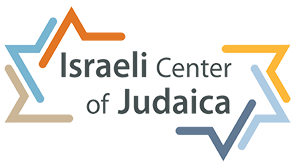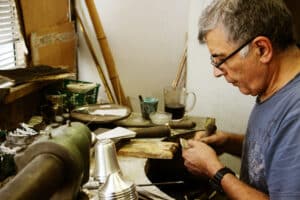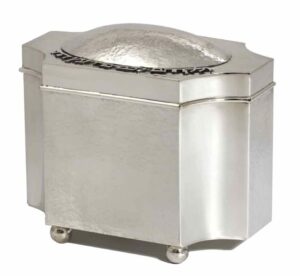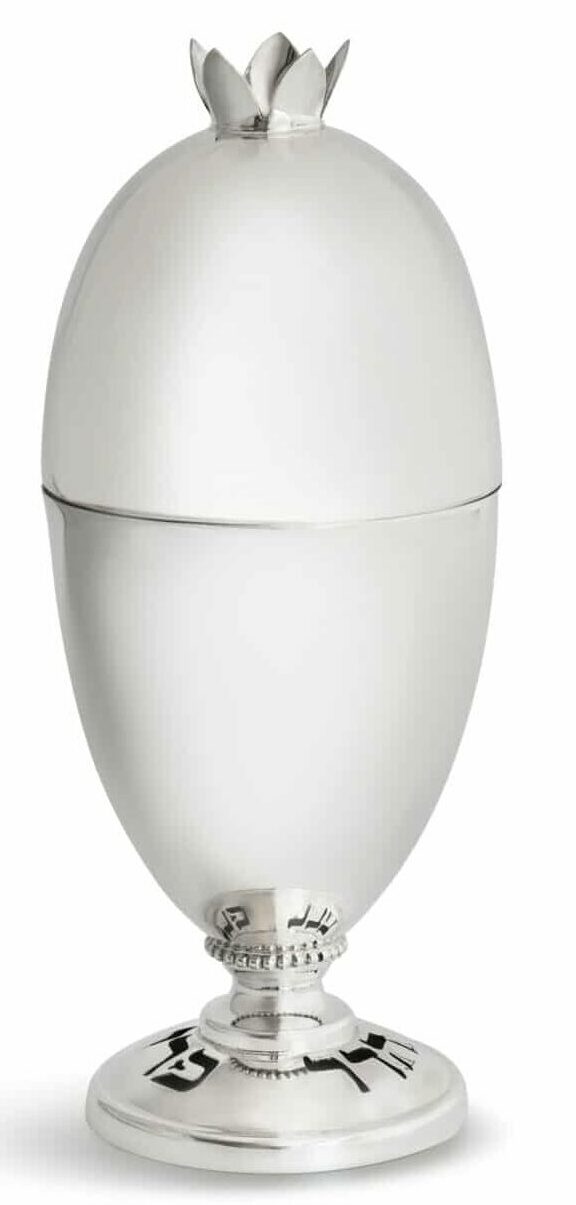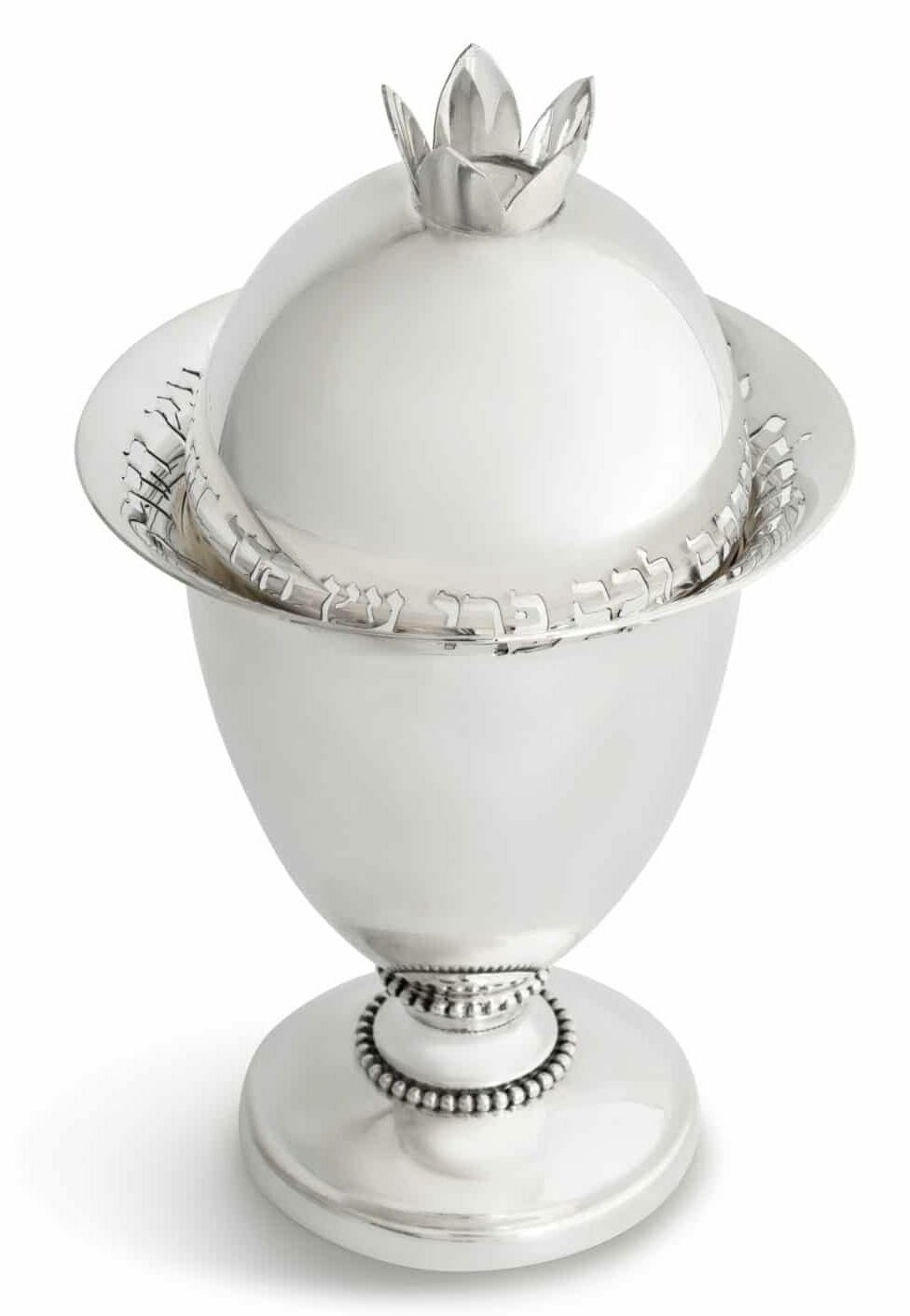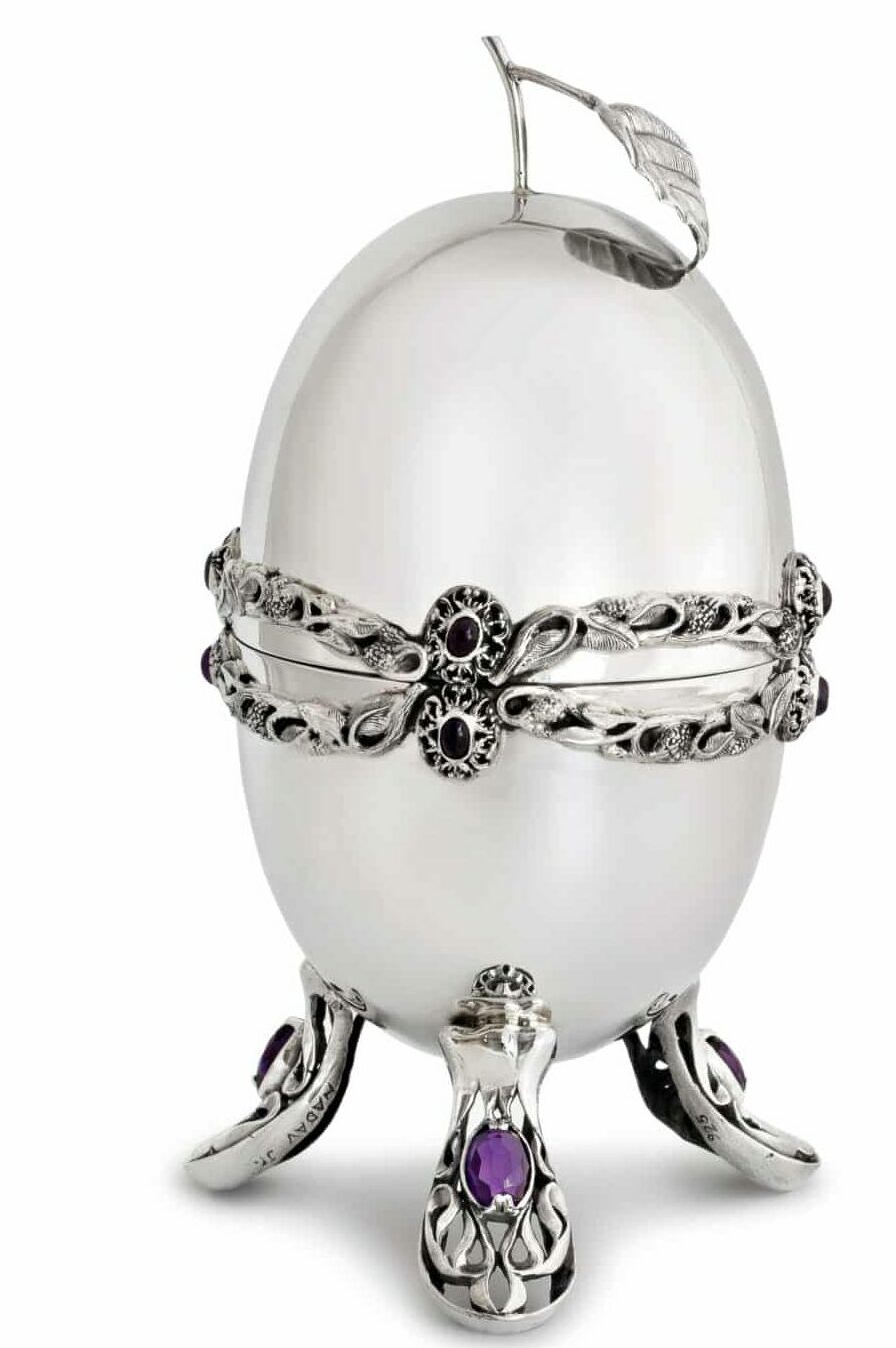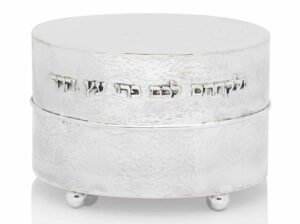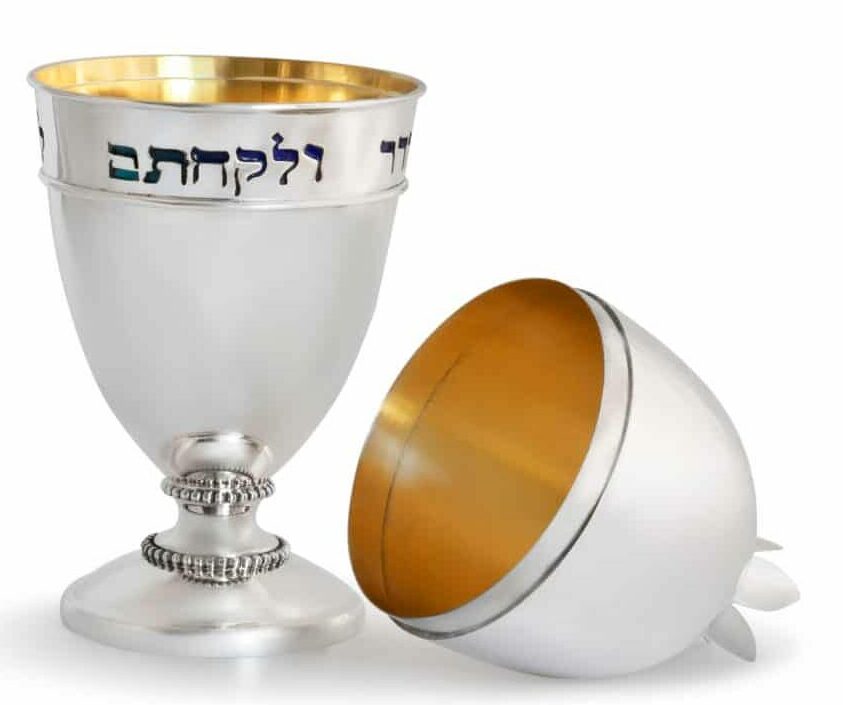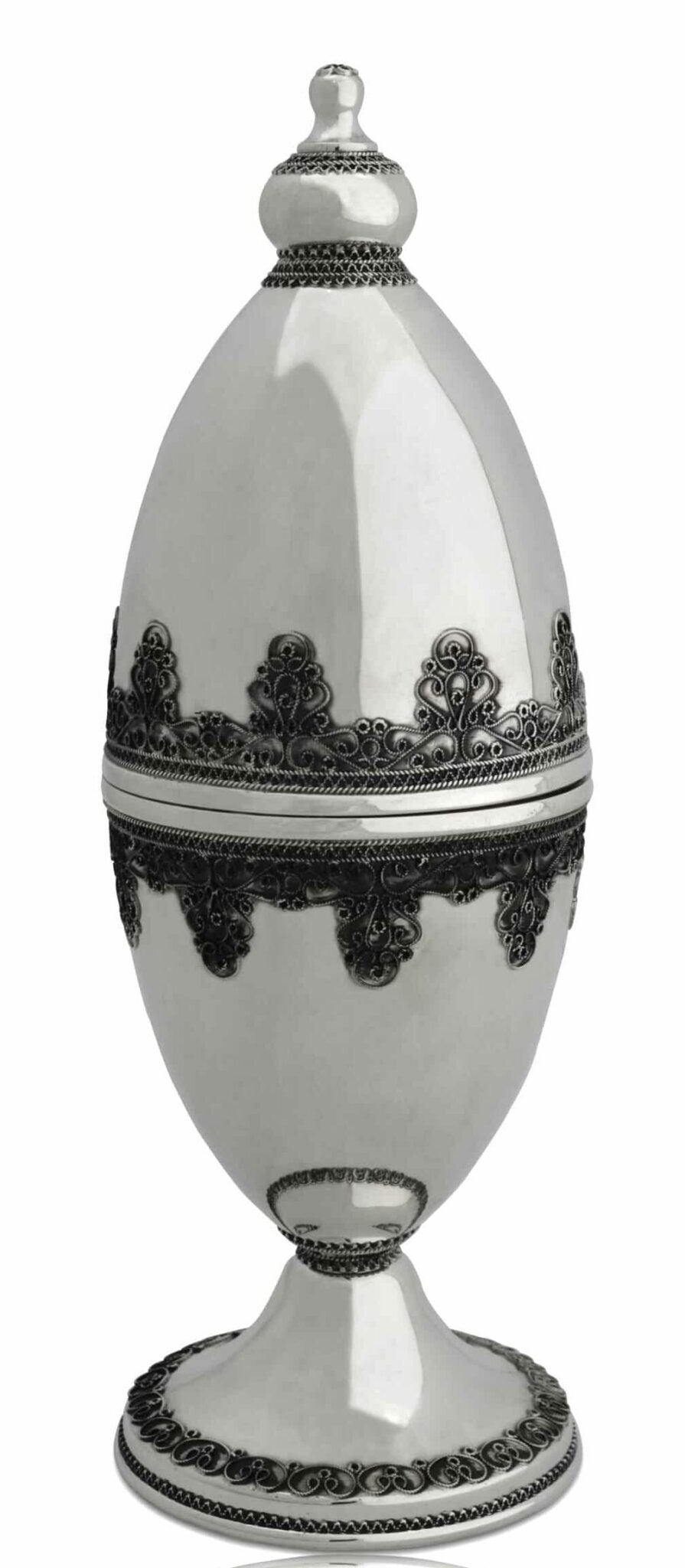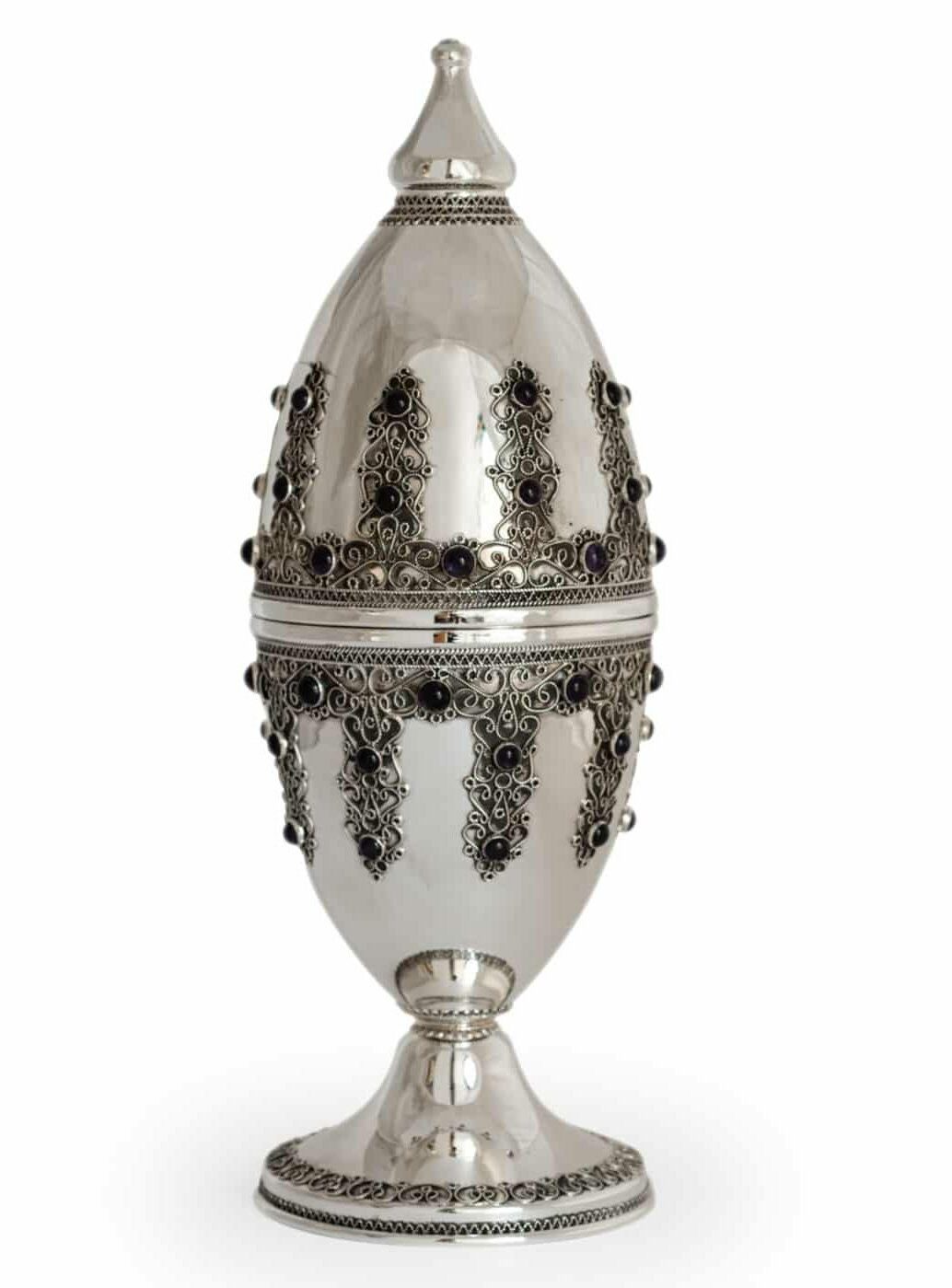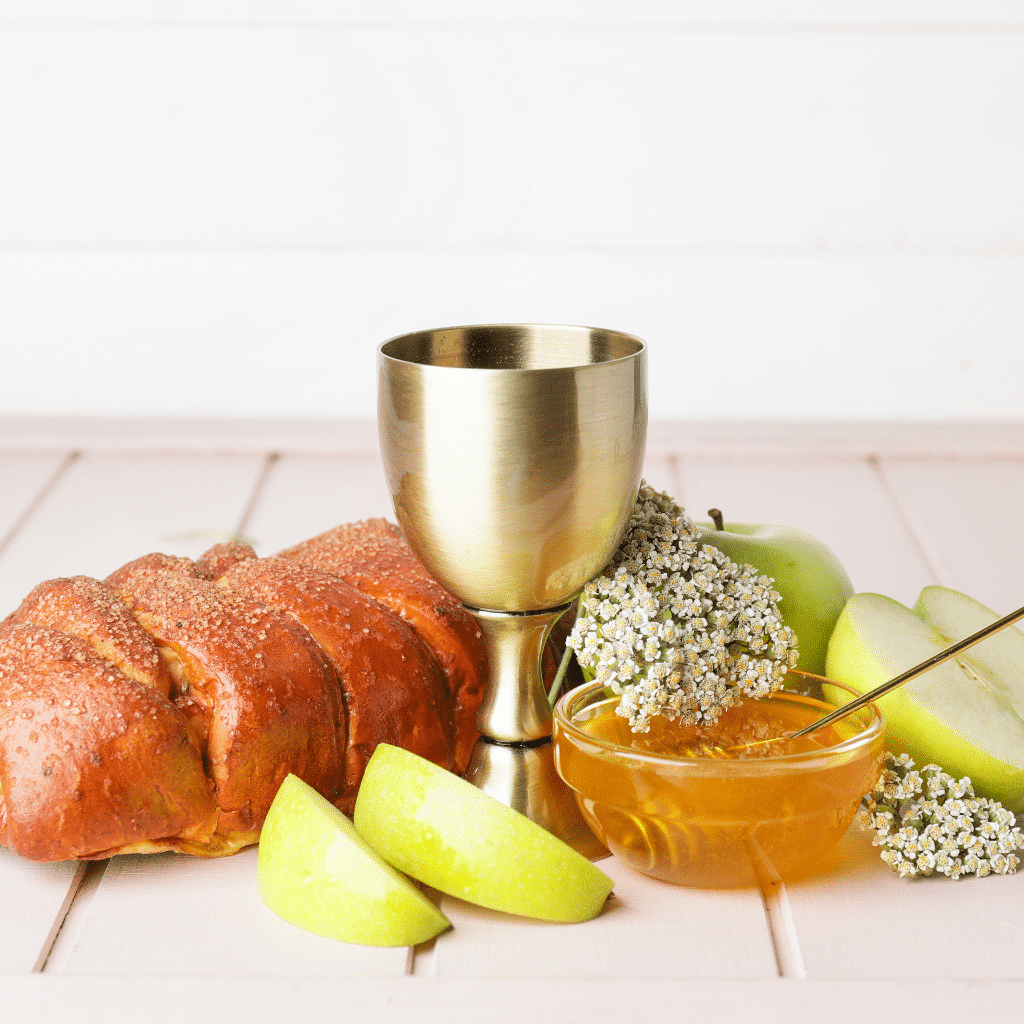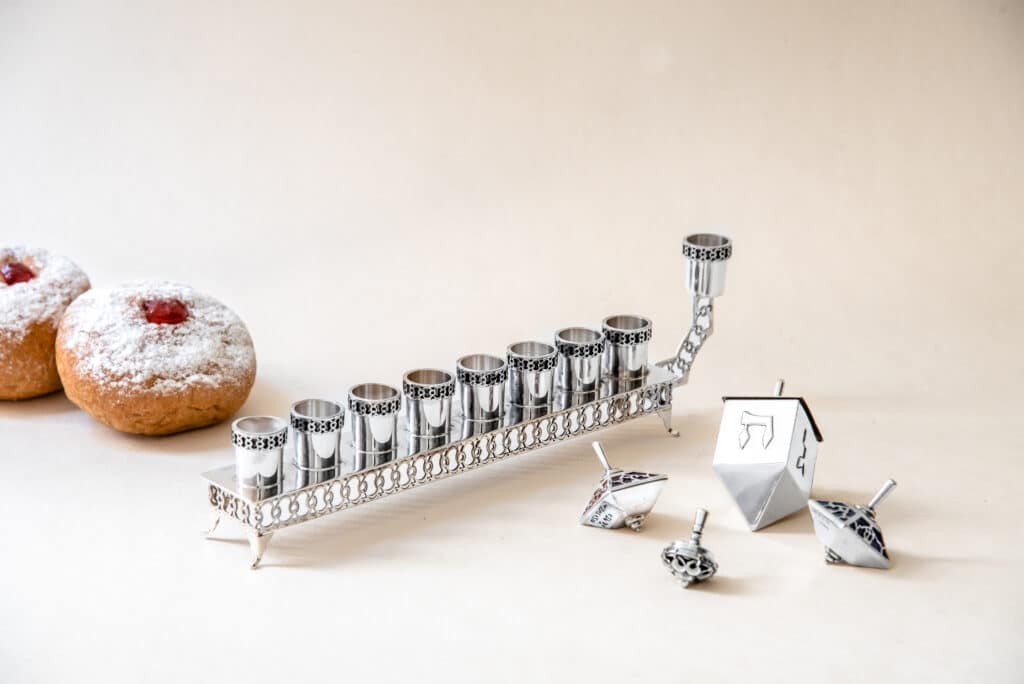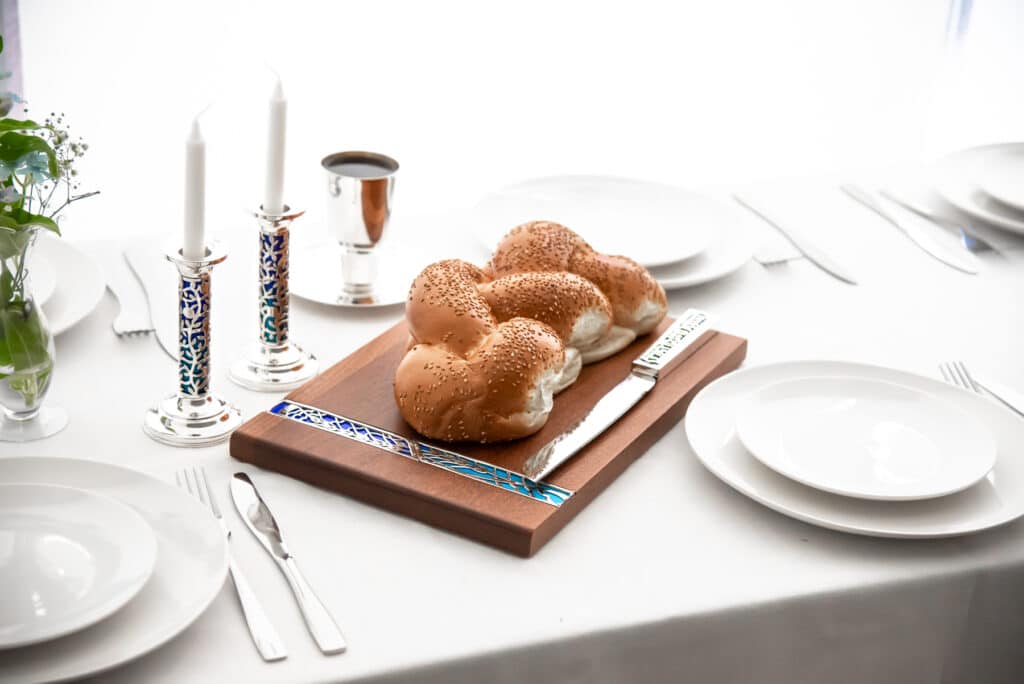
These Sukkot traditions, some dating back thousands of years, offer a rich tapestry of Jewish heritage and culture, each holding profound significance that transcends the temporal and reaches into the spiritual, uniting Jewish communities worldwide in jubilant celebration. In this article, we’ll explore these various traditions, their origins, and their significance in maintaining the vibrant spirit of the Sukkot festival today.
For Our Special Collection of Sukkot gifts.
To hear the entire article for your convenience, click the play button.
Sukkot Customs and Rituals
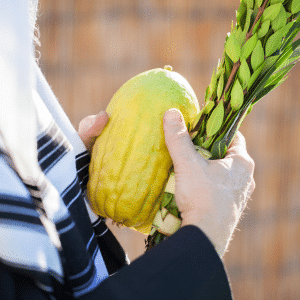
Another key ritual during Sukkot is to dwell or eat meals in the sukkah. Many families will have their meals in this outdoor structure throughout the duration of Sukkot. It signifies a sense of gratitude for nature’s abundance and also symbolizes unity within Jewish communities.
The use of lulav (palm branch) and etrog (citron fruit) is also an essential element during Sukkot. Each day during Sukkot (except on Shabbat), Jews wave these four species together in all directions- East, South, West, North, up, down- representing God’s presence everywhere.
Additionally, there is an observance called Hoshanah Rabbah that takes place on the seventh day of Sukkot. It involves circling around the synagogue seven times while holding bundle branches called Aravot.
These customs and rituals create a meaningful connection between individuals and their faith while fostering community spirit during Sukkot. They provide opportunities for reflection, gratitude, unity, and joy as participants embrace both tradition and nature’s bounty.
Elevate your Sukkot celebration with our authentic Etrog Boxes
Building the Sukkah
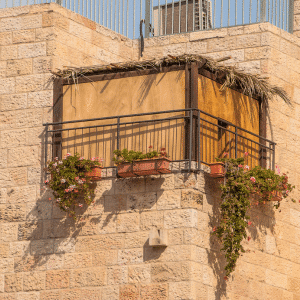
The Sukkah is constructed with at least three walls and a roof made of organic material like branches, bamboo, or palm fronds, called “schach.” It’s customary that the stars should be visible through the schach, symbolizing the transient and fragile nature of our earthly existence. It is customary to eat meals in the Sukkah throughout the week, and some even sleep in it.
Ushpizin
What does ushpizin mean in Hebrew?
“Ushpizin” is a Hebrew word with cultural and religious significance. In Hebrew, “ushpizin” (אושפיזין) refers to special guests or visitors. Specifically, in the Jewish tradition, it is used to describe the welcoming of spiritual guests during the holiday of Sukkot.
During Sukkot, observant Jews construct and dwell in temporary shelters called sukkahs. It is customary to invite honored guests or “ushpizin” into the sukkah as a symbol of hospitality and unity. These guests are often biblical figures such as Abraham, Isaac, Jacob, Joseph, Moses, Aaron, or David.
The practice of inviting ushpizin is seen as an opportunity for reflection and introspection during this joyous holiday. It also serves as a reminder of the importance of extending kindness and compassion to others.
Overall, “ushpizin” holds a special meaning within Hebrew culture as it embraces both the spirit of community and meaningful connections with revered historical figures.
Who are the Seven Ushpizin Guests?
The seven ushpizin guests are significant figures in Jewish tradition who are traditionally invited to join Jewish families during the holiday of Sukkot. The term “ushpizin” is derived from Aramaic and translates to “guests” or “visitors.” These guests are believed to bring blessings and prosperity into the home during this festive time.
The seven ushpizin guests are Abraham, Isaac, Jacob, Joseph, Moses, Aaron, and David. Each guest represents different virtues and qualities that are celebrated during Sukkot. For example, Abraham symbolizes hospitality and kindness, while Moses represents leadership and wisdom.
The Four Species (Arba Minim)
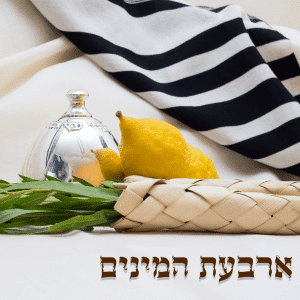
The lulav represents the spine and backbone of a person, symbolizing strength and righteousness. It is held together with three myrtle branches on one side and two willow branches on the other side. The etrog, often referred to as “the heart”, represents the human heart with its unique shape and strong fragrance.
During Sukkot, Jews are commanded to take these Four Species in hand while reciting blessings and waving them in all directions – up, down, left, right, forward, backward – to symbolize God’s presence being everywhere.
The Four Species serve as a reminder of unity within diversity. They represent different aspects of nature coming together as one cohesive unit. In addition to their spiritual symbolism, they also reflect agricultural importance by representing different types of plants found in Israel.
By fulfilling this ritualistic commandment during Sukkot through the use of these Four Species, individuals are able to connect with their faith on a deeper level while embracing nature’s beauty.
What are the 4 things for Sukkot?
The “four things” or “Four Species” for Sukkot refer to the Etrog (a citrus fruit), Lulav (a palm frond), Hadassim (myrtle branches), and Arava (willow branches). These are used during Sukkot for the ritual of waving in six directions to symbolize the omnipresence of God.
1. Etrog (Citron): A citrus fruit similar to a lemon, often kept in a special etrog box to prevent it from damage.
2. Lulav (Palm Frond): An unopened frond from a date palm tree.
3. Hadass (Myrtle Branches): Three myrtle branches with most leaves grown in groups of three.
4. Arava (Willow Branches): Two long willow branches with leaves along most of their length.
Hoshana Rabbah
Hoshana Rabbah is a Jewish holiday that falls on the seventh day of the festival of Sukkot. The name “Hoshana Rabbah” translates to “Great Salvation” or “Great Hoshanah.” This holiday holds great significance as it is considered the final chance for individuals to repent before their final judgment, which is believed to be sealed on Yom Kippur.
On Hoshana Rabbah, observant Jews participate in special rituals and customs. One notable tradition involves circling the synagogue’s bimah (a raised platform) while holding willow branches and reciting prayers. These seven circuits symbolically represent the seven days of creation and are believed to bring spiritual cleansing and blessings.
Another significant ritual of Hoshana Rabbah is the beating of willow branches. This act serves as a symbolic way to metaphorically beat away any negative influences and sins from the previous year.
In addition, some communities observe overnight learning sessions known as Tikkun Leil Hoshana Rabbah. Participants focus on studying religious texts and seeking spiritual enlightenment during these extended study sessions.
Overall, Hoshana Rabbah holds deep spiritual meaning for those observing it within Jewish communities worldwide. It provides an opportunity for introspection, repentance, and seeking divine mercy before moving forward into a new year.
Simchat Torah
Simchat Torah is a Jewish holiday that celebrates the completion of the annual cycle of reading the Torah, the Jewish holy scriptures. The term “Simchat Torah” translates to “Rejoicing with/of the Torah.”
This joyous holiday is observed on the 23rd or 24th of October\ Tishrei. It immediately follows the conclusion of Sukkot, another important Jewish festival.
During Simchat Torah, synagogues around the world engage in lively and spirited celebrations. The main focus is on reading and dancing with the Torah scrolls. These scrolls contain handwritten copies of the Five Books of Moses and are considered sacred and central to Jewish religious life.
The festivities begin with a special ceremony called hakafot, where worshippers march around the synagogue carrying the open Torah scrolls in a series of joyful processions. Songs and prayers are sung as people dance with enthusiasm, expressing their love and reverence for these sacred texts.
Immediately following Sukkot is the celebration of Simchat Torah, marking the completion of the annual Torah reading cycle. Although technically a separate holiday, it is often associated with Sukkot. Celebrations include parading the Torah scrolls around the synagogue in joyful processions.
These rituals and customs imbue Sukkot with layers of meaning, from the historical to the spiritual, making it a rich, multifaceted celebration of Jewish life.
What is Done on Each Day of Sukkot?
Day 1: Sukkot begins in the evening with the symbolic welcoming of Ushpizin, and a festive meal is eaten in the Sukkah.
Day 2: The first full day of Sukkot is celebrated by reciting special blessings over the four species and eating meals in the Sukkah.
Day 3: Special prayers are said, and meals are eaten in the Sukkah.
Day 4: Prayers are recited, and meals are eaten in the Sukkah.
Day 5: Prayers are recited, and meals are eaten in the Sukkah, as well as a special ritual of “Hakafot” (dancing with Torah scrolls).
Day 6:
- Special prayers are said.
- Meals are eaten in the Sukkah.
- Hoshana Rabba is celebrated with a unique ceremony involving circling the synagogue seven times while holding four species.
Day 7: Celebrations culminate on Shemini Atzeret with additional prayers, eating meals in the Sukkah, and Simchat Torah festivities, including parading around with Torah scrolls.
Check out our Etrog Boxes to make your Sukkot Holiday More Traditional
What is Forbidden in Sukkot?
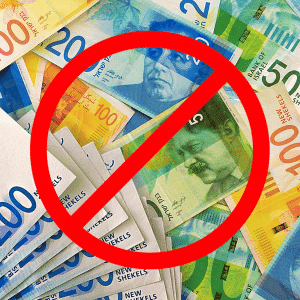
However, some exceptions are permitted on Sukkot that are not allowed on Shabbat. The activities that are generally forbidden include:
Creative Work: This encompasses a wide range of activities, including writing, erasing, sewing, tearing, and many others, which are seen as creative labor. It’s based on the types of work that were needed to build the Tabernacle in biblical times.
Handling Money and Conducting Business Transactions: These activities are considered mundane pursuits that detract from the spiritual focus of the day.
Cooking and Baking: Unlike on Shabbat, preparing food by cooking or baking is allowed on Sukkot, provided it is done before the start of the holiday.
Transferring Fire: On Sukkot, it is permitted to transfer fire, provided it is done for the purpose of the holiday. For example, it is permissible to light a fire in a sukkah, to cook food, or to use a fire to heat water.
Discover our exquisite Sukkot gifts. collection.
What Foods are Eaten During Sukkot?
Stuffed Foods: Food like stuffed peppers, cabbage, and vine leaves are popular. The stuffed foods are symbolic of a plentiful harvest.
Soup: Since Sukkot occurs in the autumn, warm foods like soups are commonly served. Chicken soup with matzo balls is a favorite in many Jewish households.
Fruits and Vegetables: The holiday is a harvest festival, so fresh fruits and vegetables are a central part of meals. Squash, pumpkins, corn, beets, and apples are commonly included in recipes.
Etrog Jam: One of the Four Species used during Sukkot, it is often made into a jam once the holiday ends.
Kreplach: These are small dumplings filled with ground meat, mashed potatoes, or another filling, often served in soup. They’re traditionally eaten on Hoshana Rabbah, the last day of Sukkot.
Challah: a braided bread, is a staple at Jewish celebrations. On Sukkot, it’s often circular, signifying the yearly cycle. This tradition is enriched by using Challah covers, artistic pieces that add to the dining ritual, enhancing the bread’s sanctity until its blessing is recited.
Kugel: This is a baked pudding or casserole, most commonly made from potatoes or egg noodles, though it can also be made of other ingredients.
Wine or Grape Juice: These are typically used for the Kiddush, a prayer recited over wine or grape juice to sanctify the holiday.
The foods eaten can vary widely among Jewish communities due to regional influences and family traditions.
Check out Kiddush Wine Accessories to make your special Kiddush even more festive!
What Are the Rules For a Sukkah?

The key rules for building a sukkah include:
1. Structure: A sukkah must be made of temporary materials such as wood, metal, or canvas. It should have at least two and a half walls, with preferably being built against an existing structure like a wall or fence.
2. Roof: The roof of the sukkah must be made from organic materials such as branches, leaves, or thatch, known as sechach. This roofing material should be loosely arranged to provide shade during the day while allowing stargazing at night.
3. Size: The minimum size of a kosher (properly constructed) sukkah is 7×7 handbreadths (approx. 38 x 38 inches). The maximum size is not specified but it is generally recommended to follow practical considerations to ensure it is large enough to accommodate dining and other activities.
4. Timeframe: A sukkah must be built before sundown on the eve of Sukkot and should ideally be completed with enough time for all necessary preparations.
5. Decorations: It is customary to decorate the interior of the sukkah with fruits, vegetables, and other natural items known as “sukkah decorations.” These decorations symbolize nature’s bounty and can also enhance the festive atmosphere.
6. Usage: During Sukkot, it is customary to eat meals and spend time in the sukkah whenever possible. Many people even sleep in them if weather permits.
It’s important to note that these rules may vary slightly based on different Jewish communities’ traditions and interpretations. Overall, building a sukkah is a meaningful and joyous practice that connects individuals to their heritage and emphasizes the value of living in temporary dwellings as a reminder of humility and gratitude.
What to do in Israel during Sukkot?

Here are some activities you can participate in during Sukkot in Israel:
Visit a Sukkah: Sukkot are built all over the country, from shopping malls to parks, and many families open their Sukkot to visitors. Some cities even host communal Sukkot, where everyone is welcome to come, sit and eat.
Attend Sukkot Events and Festivals: During Sukkot, cities throughout Israel host various events such as concerts, theatre performances, and special children’s activities. Jerusalem’s annual “March of the Nations” and “Jerusalem Parade” are particular highlights.
Visit the Western Wall (Kotel): Many Jews pilgrimage to the Western Wall in Jerusalem during Sukkot. Witnessing the masses of people who come to pray at the Wall during the holiday is a powerful experience.
Experience Simchat Beit Hashoeva: This is a festive event that takes place every night in Sukkot. There are live concerts, dancing, and religious lessons in many neighborhoods and cities throughout Israel.
Hoshana Rabbah Prayers: On the seventh day of Sukkot, many people attend special synagogue services where the Torah is taken out and seven circuits are made around the bimah (reading table), a custom known as Hoshanot.
Explore Nature: As Sukkot is a harvest festival, it’s an excellent time to enjoy Israel’s natural beauty. Hiking, camping, and picnics are popular activities, particularly in the many national parks and reserves.
Celebrate Simchat Torah: Simchat Torah is a holiday that comes right after Sukkot, signifying the conclusion of the annual cycle of Torah readings. The festival is renowned for its lively and spirited celebrations. Participants joyfully dance with the Torah scrolls, sing traditional songs, and partake in festive meals.
Particularly in Israel, these celebrations extend beyond the synagogues and into the streets, with participants continuing the tradition of dancing with the Torah scrolls. The atmosphere is exhilarating and offers a unique experience to be part of.
Remember, during Sukkot, many businesses and public institutions have special holiday hours or may be closed, especially on the first and last days of the holiday. Be sure to check the schedules of places you plan to visit.
Summary
Sukkot, one of the most joyous Jewish holidays, offers a blend of rich traditions, rituals, and symbolism that are deeply woven into Jewish culture. To truly experience and embrace these traditions, we invite you to explore our carefully curated collections at The Israeli Center Of Judaica.
Immerse yourself in the depth and beauty of our heritage with our diverse range of 100% Israeli-made Judaica and Jewish artwork, each piece a labor of love created in the heart of Jerusalem.
With generations of practice and knowledge passed down from father to son, our products carry a unique authenticity and beauty that will bring the spirit of Sukkot into your home.
